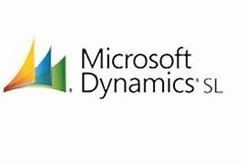Implementing a new Enterprise Resource Planning (ERP) solution is a significant decision for any business.

The process can be daunting, especially if you subscribe to the “if it’s not broken, don’t fix it” mindset. However, advancements in ERP software have made it easier than ever to switch to a more efficient and modern system. If you’re currently using Microsoft Dynamics SL (formerly known as Solomon) to manage your operations, you may be wondering about the future of your favored solution.
This article explores why Dynamics SL users should consider migrating to Acumatica Cloud ERP, a robust and adaptable solution. We’ll delve into the reasons behind this choice and provide a step-by-step guide to make your transition seamless.
Dynamics SL End-of-Life
Microsoft Dynamics SL has served many businesses well over the years, but as technology evolves, software must evolve with it. Microsoft’s gradual shift away from their on-premises solutions – like Dynamics SL – has raised concerns among users. You might be wondering about the future of support, updates, and compatibility with modern business needs.
Microsoft has stated plainly that mainstream support will end for Dynamics SL in January 2024. Extended support will be available until 2028, but that is only for security fixes. New features and end-of-year accounting updates will soon be a thing of the past.
Why Choose Acumatica?
It’s true, Microsoft has a cloud-based solution for small businesses. However, Dynamics 365 Business Central is a completely different ERP,  and moving your data and operations over from Dynamics SL is far from a simple migration. Additionally, SL’s strong project-centric focus and other strengths don’t always find a suitable counterpart in Business Central.
and moving your data and operations over from Dynamics SL is far from a simple migration. Additionally, SL’s strong project-centric focus and other strengths don’t always find a suitable counterpart in Business Central.
Acumatica Cloud ERP presents itself as a compelling alternative for Dynamics SL users. Recognized as the Best ERP Software by PCMag and the Best Manufacturing Solution by SIIA CODIE Awards, Acumatica offers a host of advantages:
- True Cloud and Mobile Functionality: Acumatica is a true cloud-based solution, which means you can access your ERP system from anywhere, at any time. With mobile applications, you can stay connected to your business even while on the go.
- Flexibility in Deployment: Acumatica provides flexible deployment options. You can choose the applications you want to implement and when to do so, allowing you to tailor the system to your specific needs.
- Broad Feature Set: Acumatica has rich functionality that allows you to make the transition without losing critical portions of your existing workflow. What is more, Acumatica has much more to offer than Solomon, with modules for payroll, warehouse management, industry-specific capabilities, document management, field service management, and more, without resorting to third-party applications.
- Browser-Based Access: Accessing Acumatica is as simple as opening a web browser. No need for complex installations or compatibility issues.
- Scale as You Grow: Acumatica offers various licensing options, making it adaptable to businesses of all sizes and budgets. Since Acumatica is traditionally licensed based on resource consumption, you pay for the processing power you need, and you enjoy the freedom of unlimited users. This increases user adoption and ensures you can use Acumatica to its fullest potential in your organization, maximizing the return on your ERP investment.
Steps for Migrating to Acumatica from Dynamics SL
Migrating from one ERP system to another is a critical process that requires careful planning and execution. Here’s a step-by-step guide to help you smoothly transition to Acumatica:
1. Business Operations Review
Start by reviewing your current Dynamics SL system. Understand how you use it and take note of any essential customizations.
2. Workflow Discovery and Translation
Work with experts to map your data and translate existing workflows and processes from SL to Acumatica. This step helps establish project priorities and scope and allows you to benefit from the experience of professionals who can identify current inefficiencies and suggest more effective business processes to help you grow your business.
3. Build, Migrate, Implement
Configure Acumatica to suit your now-optimized workflows and processes. The system’s flexibility allows even complex workflows to be seamlessly integrated. Leverage your partner’s migration tools to expedite the transfer of your Dynamics SL data. Thorough testing and validation come next to ensure your processes function as expected.
4. Training and User Adoption Support
Collaborate with consultants to provide role-specific training for your staff. Acumatica’s intuitive interface just makes sense, easing the transition for users of other legacy ERP solutions, including Dynamics SL. Proper training ensures your team can use the software to its full potential.
5. Go Live
Transition to Acumatica when all team members have had their questions, concerns, and issues addressed. The duration of this phase varies but typically takes between three to six months, depending on project size and customizations.
6. Ongoing Maintenance and Support
Post-implementation, Gale Force Consulting will continue to support you, ensuring your system consistently delivers excellent results, and helping you to implement more functionality as you need it.
Start the Transition from Dynamics SL to Acumatica Today
The landscape of ERP software has evolved significantly, making it easier than ever to transition to more modern and adaptable solutions like Acumatica Cloud ERP. With the right guidance and a well-structured plan, migrating from Dynamics SL to Acumatica can be a smooth and successful journey. Read more about GFC’s Tack to Acumatica for Microsoft Dynamics SL.
If you’re ready to make the switch from Dynamics SL to Acumatica and want a trusted partner by your side throughout the process, contact Gale Force Consulting. Our experienced team is ready to guide you every step of the way, ensuring a seamless transition to a more efficient and flexible ERP solution.
Don’t wait – reach out to Gale Force Consulting today and experience the benefits of Acumatica Cloud ERP for your business.

